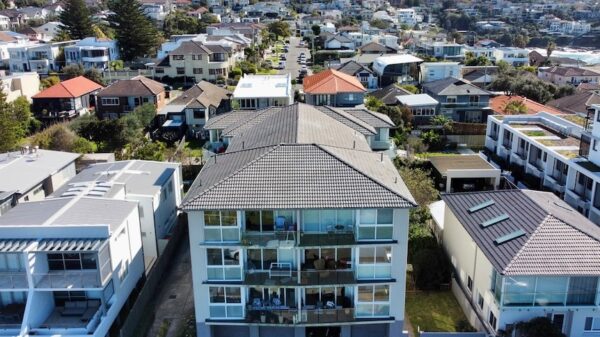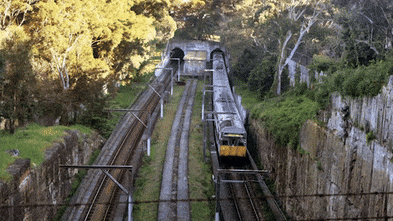UPDATE: A vital housing initiative is unfolding at the Woollahra railway station site in Sydney, following a significant economic roundtable in Canberra aimed at delivering 1.2 million houses within the next five years. New developments are underway as NSW Premier Chris Minns prepares to announce the plan, highlighting the urgent need for increased housing density.
This proposal is an essential step towards achieving the ambitious housing goals discussed during the roundtable, where officials emphasized cutting red tape and expediting approvals. The Woollahra site, long unused, is poised for transformation into a model of Transport Oriented Design (TOD), aligning with the Department of Planning’s new regulations for “low and medium rise” housing.
Strategically located on a ridge, the site offers stunning views while minimizing the impact on local residents, a crucial factor for the often-opposed Woollahra community. With key amenities just a train ride away at Edgecliff and Bondi Junction, the site promises to enhance local living conditions through improved accessibility.
Despite the potential benefits, the proposal faces fierce opposition from local residents, often labeled as NIMBYs (Not In My Back Yard). The Woollahra council is expected to resist the initiative, citing concerns over community impact. However, state authorities may override this opposition, leveraging the “State Significant Proposals” legislation to streamline the approval process and reduce bureaucratic hurdles.
Preliminary designs suggest the construction of six to eight-storey apartment buildings, which many experts see as an optimal balance for sustainability and urban living. Nevertheless, these plans must navigate stringent state regulations and the complex National Construction Code (NCC), which could complicate the project’s advancement.
Critically, the NCC’s evolving requirements have sparked debate. For instance, changes now mandate expensive sprinkler systems in buildings over three storeys, raising construction costs by 3-5 percent without clear justification. Such regulations have architects questioning the balance between safety and affordability.
The vision for Woollahra station is not only about residential buildings but also about reimagining the surrounding area. Increased density could pave the way for a shift in local housing structures, potentially replacing single-family homes with more affordable, sustainable options.
Architect and president of the Australian Architecture Association, Tone Wheeler, emphasizes the importance of learning from past developments, noting that previous projects in the area could provide valuable insights into effective urban planning.
As the announcement date approaches, the community and stakeholders await further details. The future of Woollahra station could redefine housing in Sydney’s eastern suburbs, serving as a beacon for future TOD initiatives across the region.
Stay tuned for the latest developments on this pressing story as the housing landscape in New South Wales continues to evolve.































































